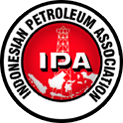Publications
Trapping mechanism in Mutiara Field, Kutei Basin, East Kalimantan
Proceedings Title : Proc. Indon. Petrol. Assoc., 18th Ann. Conv., 1989
Mutiara field is one of several oil and gas fields in the Kutei Basin where a combination of structure and stratigraphy is the dominant trapping mechanism. Middle- Upper Miocene delta sandstones are draped over an elongate, NE-SW trending anticline between Pamaguan and Samboja oil fields. The main hydrocarbon bearing section in Mutiara field is generally younger than the one in Samboja and Pamaguan fields. Thirty three wells have been drilled to date for a 94% development success ratio.The thickest net hydrocarbon bearing section within Mutiara field lies in the lowest part of the structure. Of several concepts which could explain this phenomenon, detailed reservoir studies suggest that geometry and orientation of the sand bodies with respect to the structural trend are the most critical factor for effective trapping of hydrocarbons in the field.Mutiara field is located onshore in the Kutei Basin, in Huffco Indonesias Sanga-Sanga block, East Kalimantan (Figs. 1 and 2). The field was discovered in 1982 by the Dondang - 1 (M-1) exploratory well which encountered 31 feet of oil and 91 feet of gas. An additional 32 wells have been drilled including 2 dry holes. Six of the wells are shallow, with total depth around 1000 feet, and the total depth of the remaining 27 wells ranges from 7000 feet to 10000 feet.
Log In as an IPA Member to Download
Publication for Free.
or
Purchase from AAPG Datapages.
